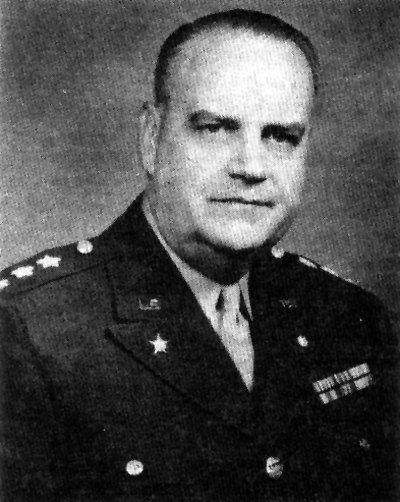Wilhelm Delp Styer (1893-1975) was a Lieutenant General in the US Army and an instrumental figure in the early stages of military involvement in the Manhattan Project. He also served as the Army liaison on the project’s Military Policy Committee.
Born in Salt Lake City to a family of Czech origin, Styer received degrees from the US Military Academy and MIT. He came from a military family: his father, brother, and son all served at some point in their lives. He was stationed during World War I on the Mexican border and in France. After the war, he continued to work on government engineering projects in New York City, Paris, and the Panama Canal Zone.
In March 1942, he followed his boss, General Brehon Somervell from the Construction Division of the Office of the Quartermaster to the Services of Supply (SOS). In his position as Chief of Staff of SOS, he was ordered by General George Marshall to examine the feasibility of a military-sponsored atomic bomb effort. Marshall believed then that heading the Army end of the project could be a “part-time” job. In the initial stages of his involvement, Styer was forbidden from even informing his immediate superior, Somervell, of what he was doing. Styer was subsequently involved in the formation of the Manhattan Engineering District, including giving Colonel James Marshall his orders to head the district.
Later in 1942, when Vannevar Bush sought to reorganize the leadership of the project, he wanted Styer as the Army executive for the project. But Somervell would not give up his deputy, so Styer suggested then-Colonel Leslie Groves. The two men were friends, having graduated only a few years apart from West Point. Styer had already been looking for new jobs for Groves in 1942 after the Colonel had alienated many of the engineers under his command at his previous post. But he was also impressed by Groves’s “capacity for work and the fearlessness with which he tackled difficult jobs.” He eventually delivered Groves his orders to take over the project, over Bush’s objections.
Styer became the Army’s representative on the Military Policy Committee. The other members of the group were scientists Bush and James Conant, respectively the committee’s chairman and alternate, and Admiral William Purnell from the Navy. On the Committee, Styer worked on resource procurement and securing Army manpower for the project. Additionally, he served as a liaison between Groves and the upper echelons of the Army. He also served on the Combined Policy Committee, which coordinated atomic research with Britain. He served on its powerful Technical Subcommittee, and also helped secure the purchase of uranium ore from the Belgian Congo.
In May 1945, Styer was given command of Army Service Forces (the new name of SOS) in the Western Pacific, leaving his Manhattan Project duties to others. After the war’s end, he served on a military tribunal that tried and convicted Japanese military officers for war crimes committed in the Philippines. One case (in which the tribunal had sentenced the defendant to be executed) was appealed to the Supreme Court, which upheld the tribunal’s power. Styer later served as a military governor in Japan before retiring from the military in 1947. He died in Coronado, CA in 1975.





